Buoyed by the success of the Super X series, of flying tanks, and salvaging the futuristic technology of Mecha King Ghidorah, the Counter G Bureau will create their own Godzilla to fight the original. This is in line with the increased militarism of the Heisei era, and a huge difference from the original mechagodzilla, which was created and run by aliens. But the similarities are striking. Mechagodzilla has an astonishing amuount of firepower that it can out downrange; a wide variety of beam weapons, as well as missiles.
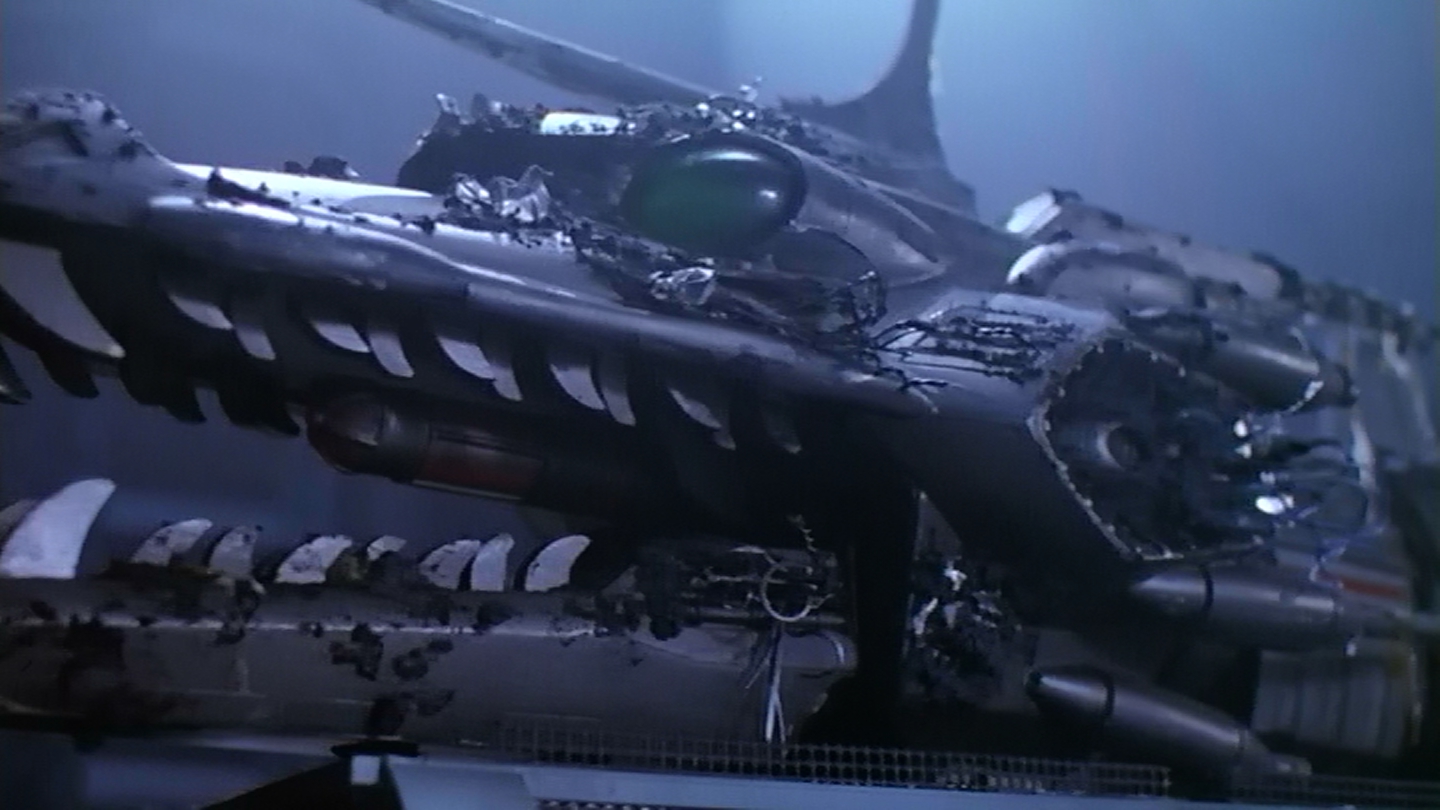
Before the construction of Mechagodzilla, G-Force's main machine was Garuda, another iteration of the Super X flying tank concept. But Mechagodzilla rules the roost now. It's kind of interesting to see the training of the Mechagodzilla pilots. It's a bit like the combat training in Pacific Rim, specifically with martial arts and information lectures, and time in a simulated cockpit.
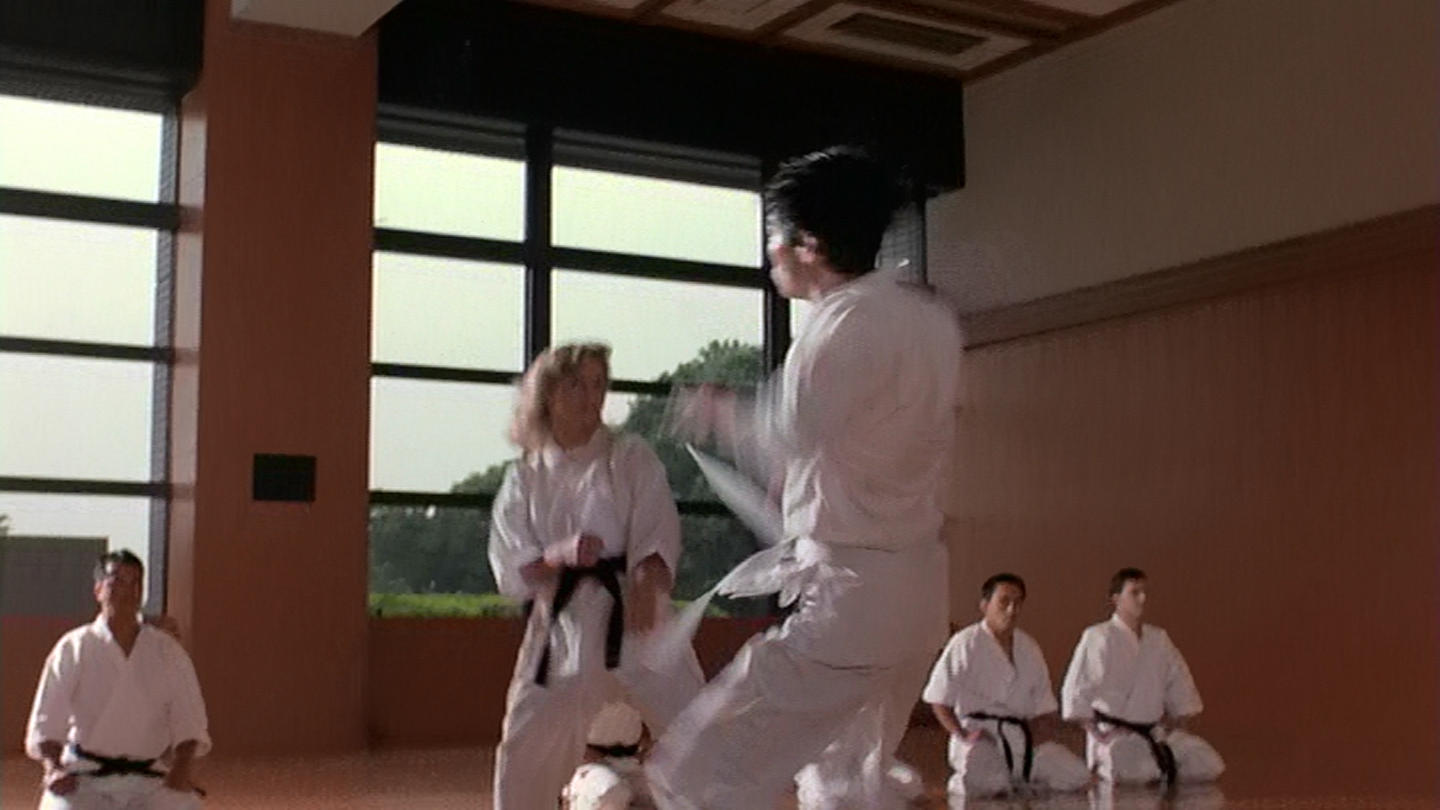
Meanwhile, a group of geologists have discovered an egg on a volcanic island inhabited only by Rodan. TRhe egg was discovered near the broken shell of another egg, which the professor is certain hatched Rodan. And, of course, it's been radiated. How he knows this... well, some questions don't lead anywhere productive.
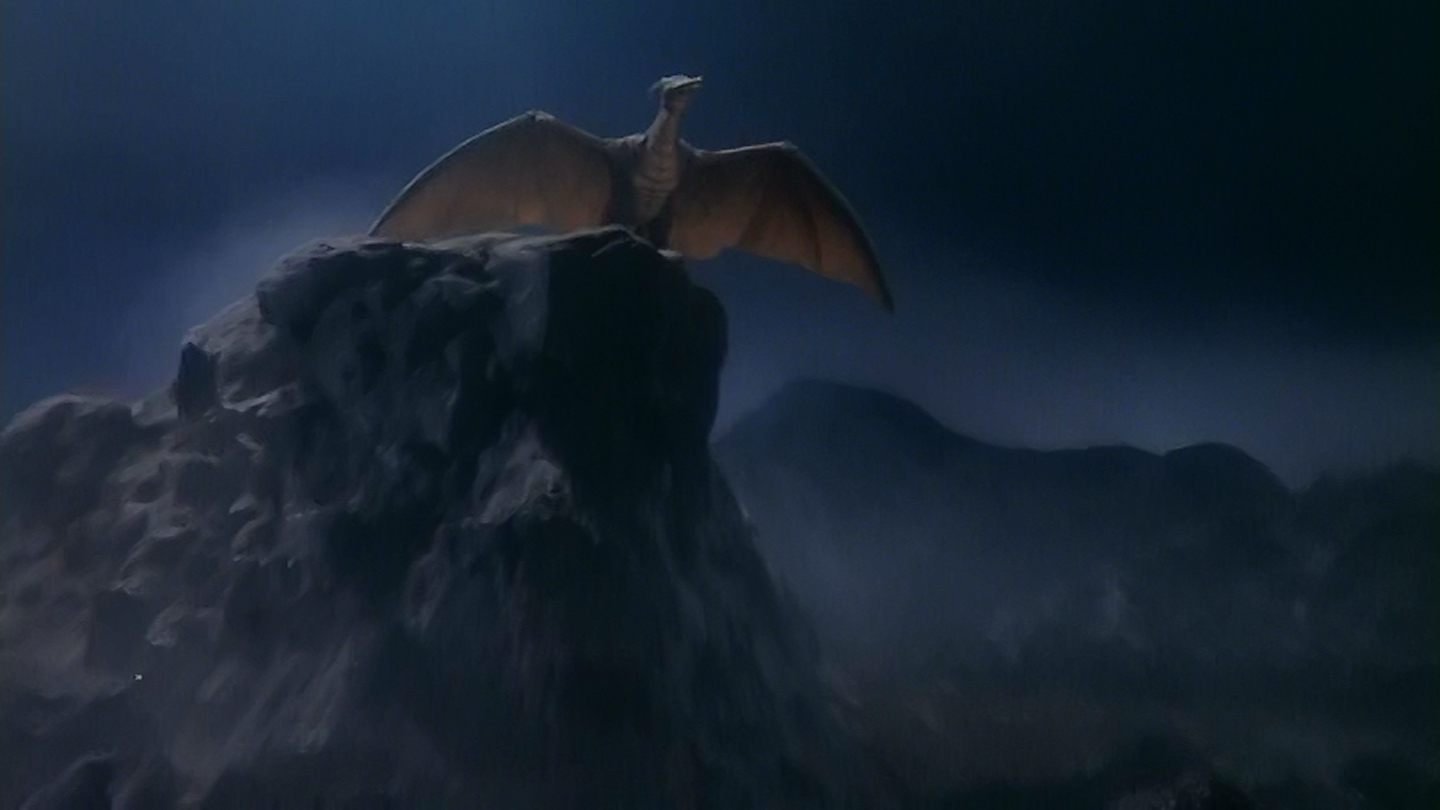
But where there's one giant mionster, there's likely to be another. Godzilla shows up a little after Rodan does, and the two have a quick fight. Rodan shows a breath weapon similar to Godzilla's, but he never uses it against Godzilla. Instead, there's a lot of body-slamming, which was very absent from the previous film. The physicality of the fight makes it much more satisfying that the director's previous effort. As the titans fight, the scientists make off with the egg.
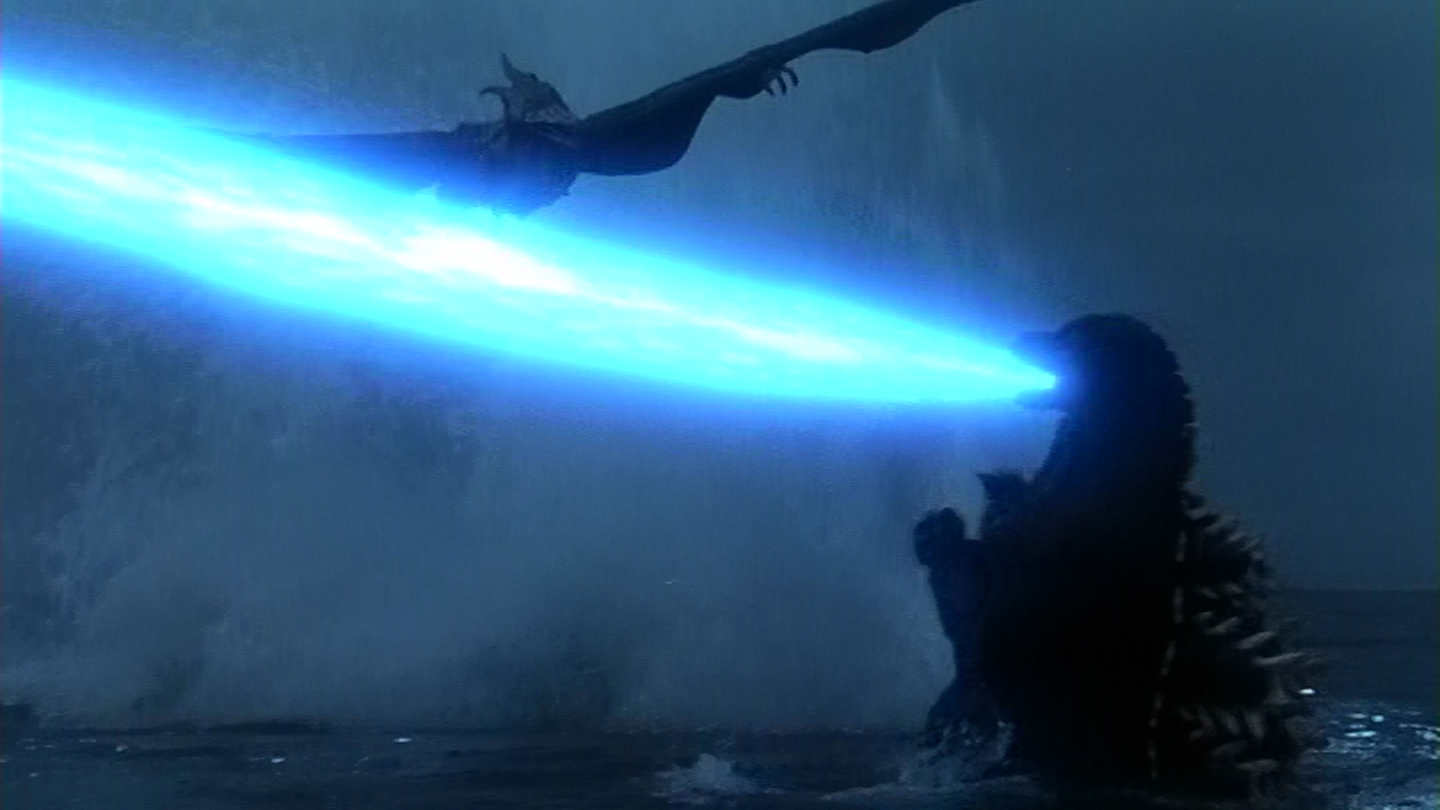
Any egg introduced in the first act must hatch in the second act. This introduces us to Godzilla Junior, a much more palatable scion of Godzilla whan Minilla was. The plot involving Junior is quite similar to Gorgo and Gappa. The child of the monsters is taken by humans, and the parents wants to get it back. But Junior seems to be the product of a mixed marriage, unlike the baby Gappa. Godzilla and Rodan stop fighting only to take on threats to the young monster. Junior will appear in the next two Godzilla films
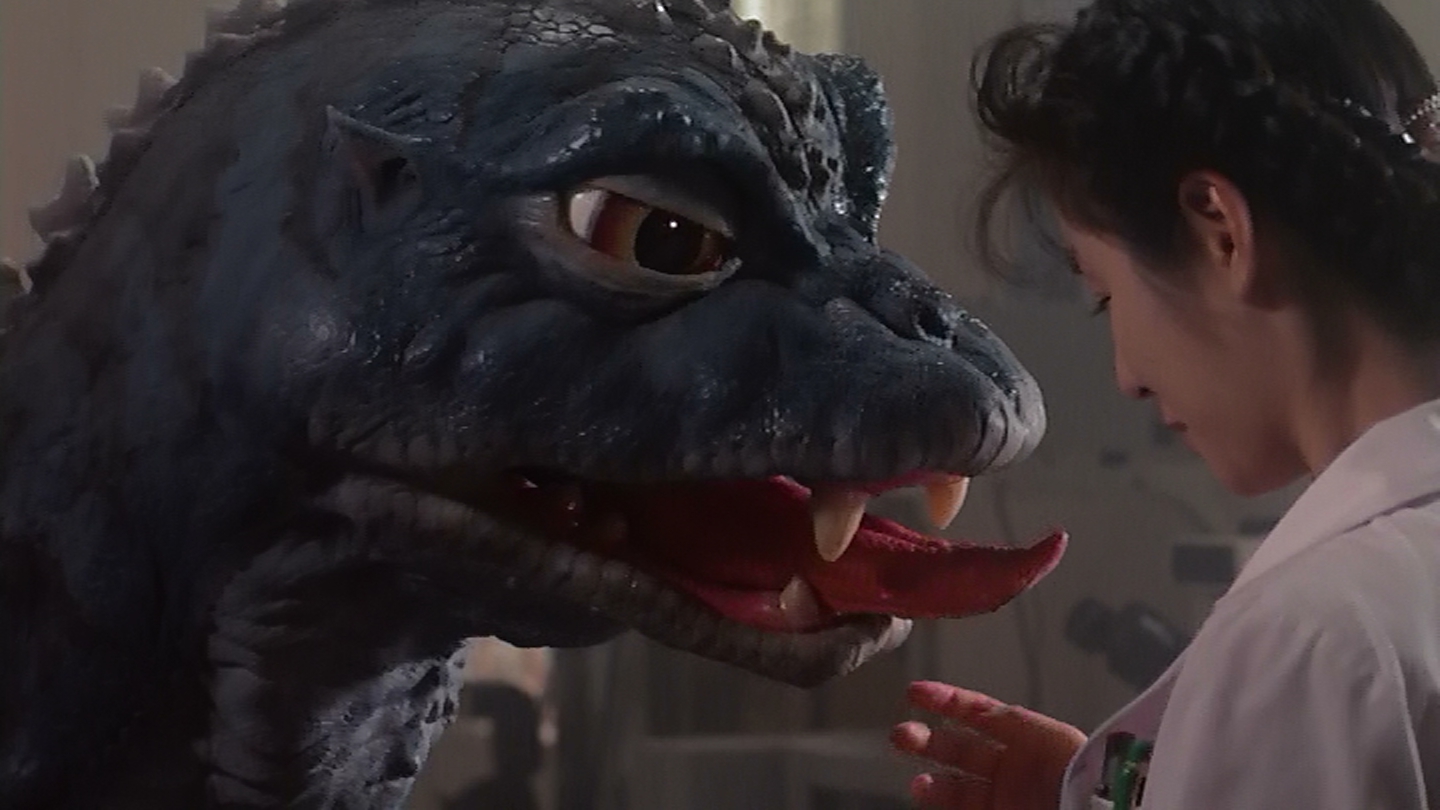
Pursuing his child, Godzilla makes landfall in Japan and Mechagodzilla is deployaed. Like all future Mrechagodzillas, this one can fly, allowing it to be rapidly deployed. It has a hovering action that is very similar to Space Godzilla's in the next film. The big weapon, the one deployed from its belly which suspiciously a telephoto lens, is called the plasma grenade. I have no idea why. It's an energy blast, just like all the other weapons. It is, however, powerful enough to knock Godzilla on his ass.
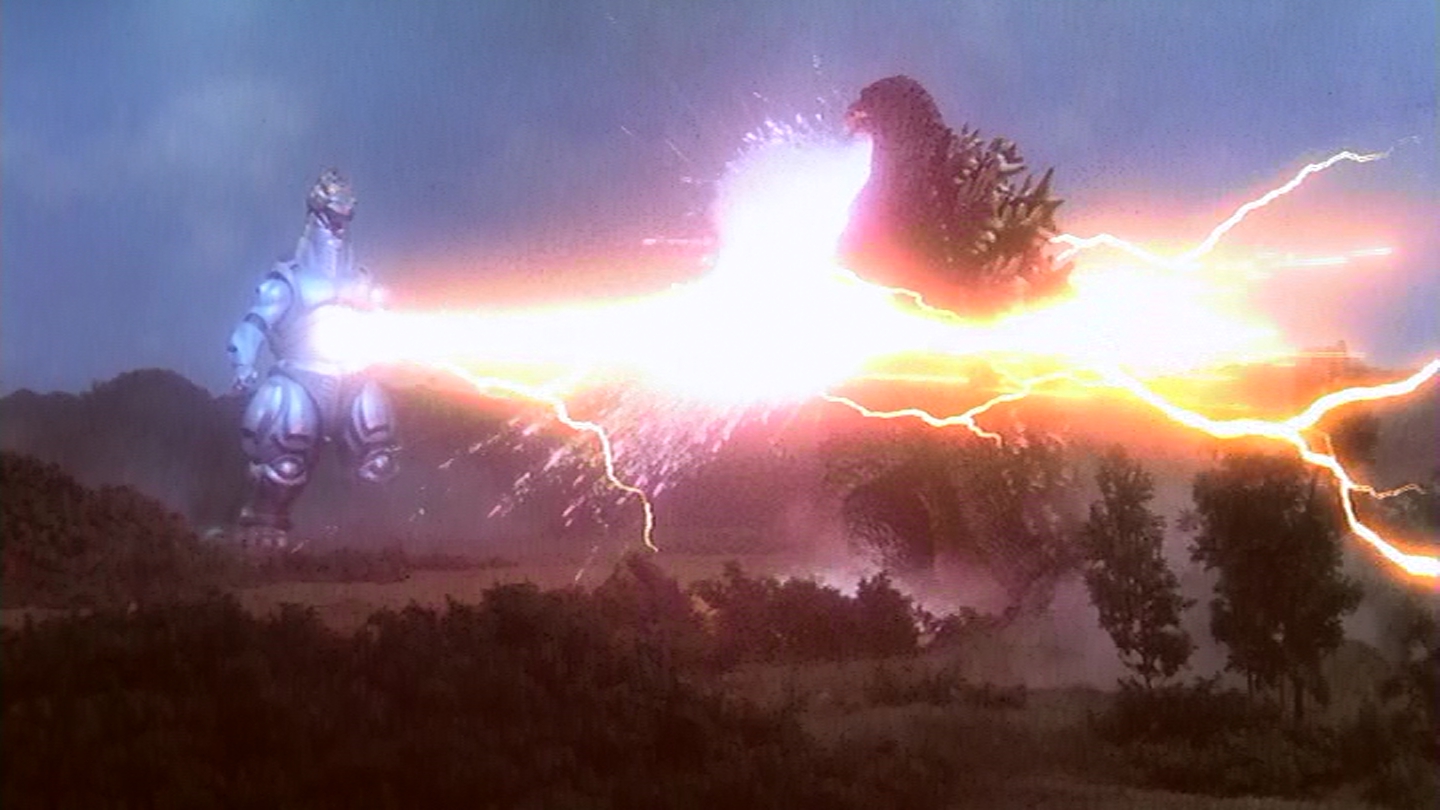
It also has a taser-like weapon, again, likely inspired by Mecha King Ghidorah. And the first fight against Godzilla goes well until Godzilla uses the nuclear pulse to send energy back up the shock cables. Mechagodzilla is thus disabled.
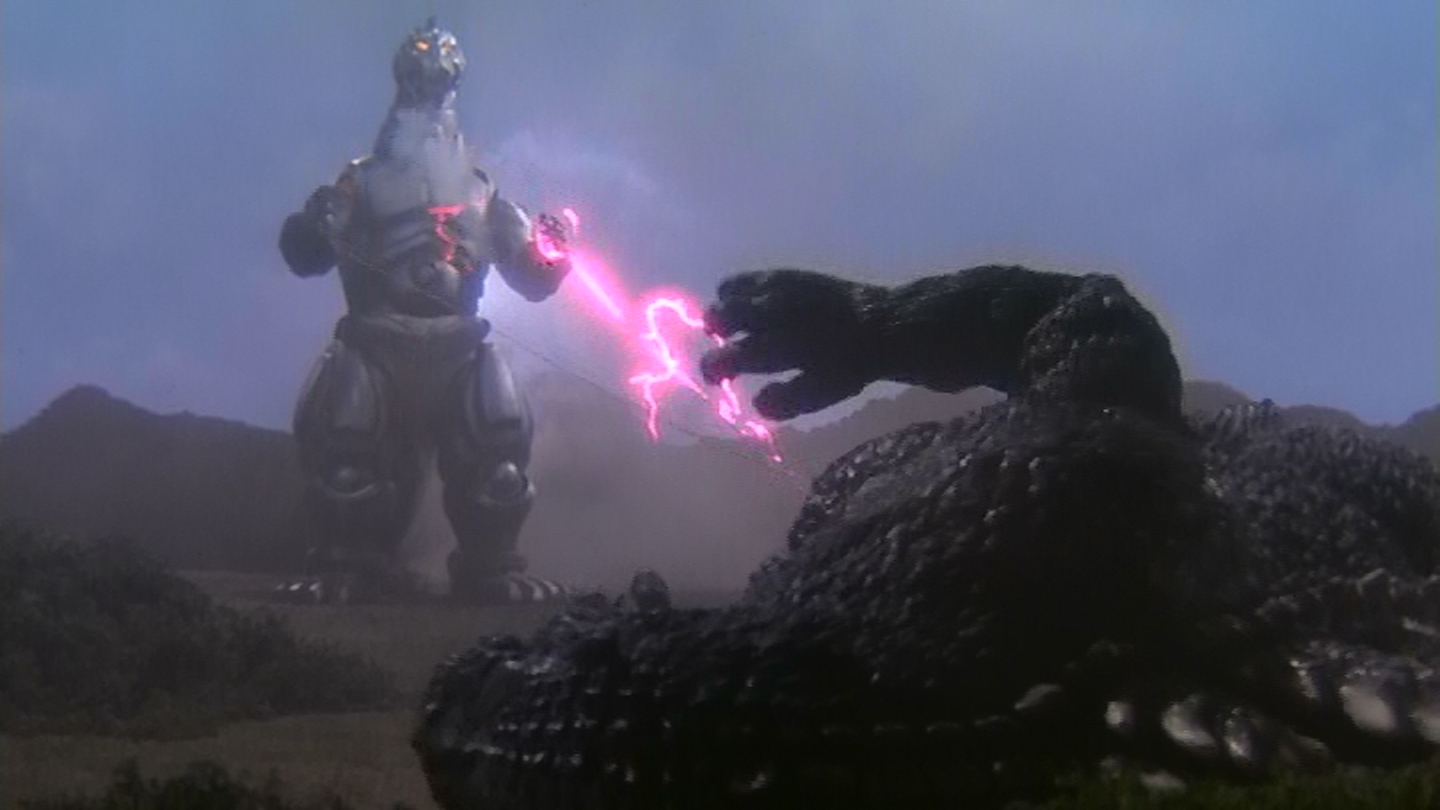
With Mechagodzilla out of the way, the standard military tried to engage. It works out about as well as it always does.
Again, Pacific Rim seems to have drawn heavily from this film, since this is the only film to target Godzilla's 'second brain.' In this case, the G-Crusher plan is to paralyze Godzilla.
Rodan, who has been absent since the slug-out with Godzilla, is awakened and powered up, somehow, by a song which reaches it through Godzilla Junior. It's at this point that he gains his atomic breath. I guess part of the point is thast everyone powers up during the movie?
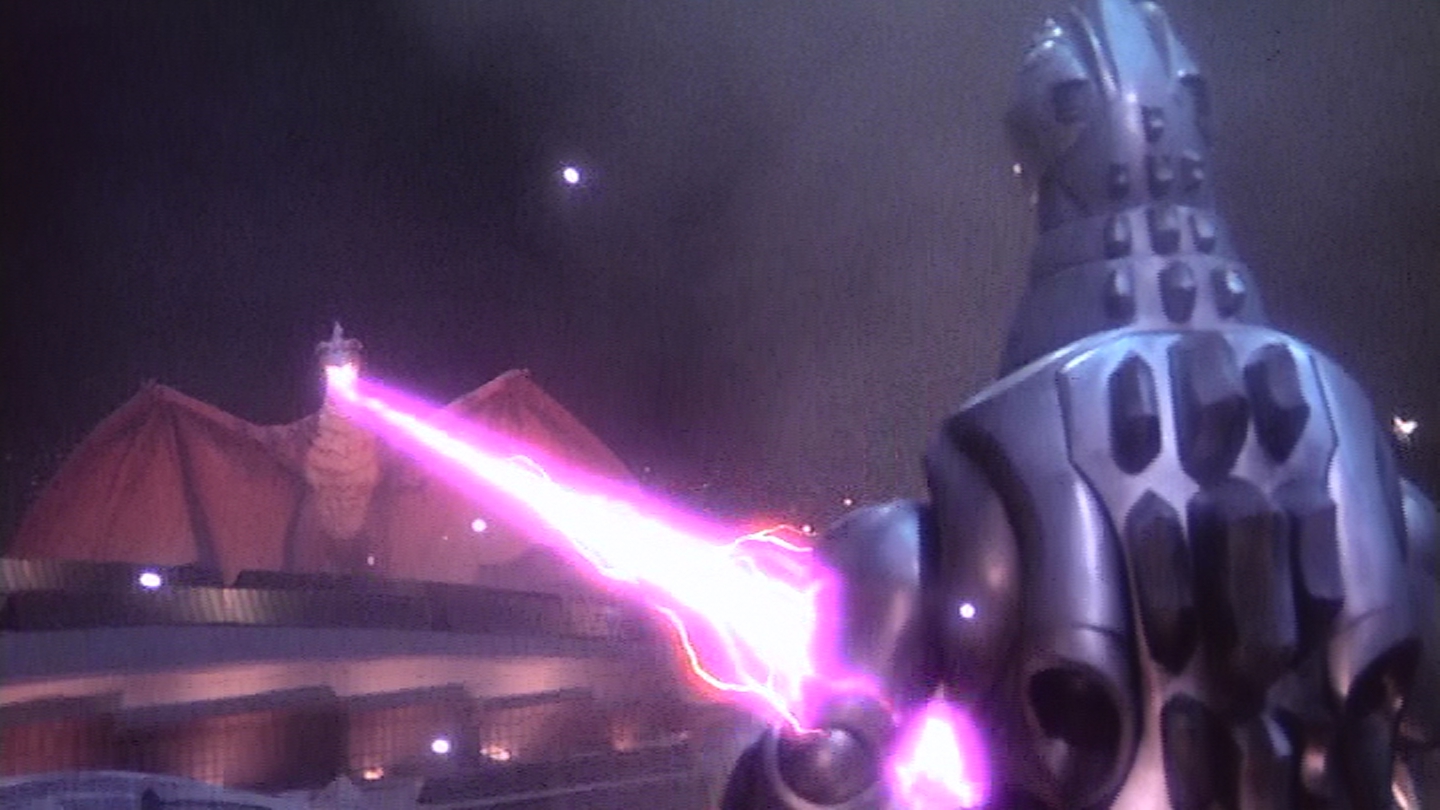
Unexpectedly, some complex emotions are evoked in the film. Miki Sagusa objects to the military using Godzilla Junior as a lure to get Godzilla clear of Japan. They're putting Junior's life in danger, yet at the same time, this action may save the lives of others. Miki suffers a similar moment of doubt as she is the one who activates the G-Crusher and paralyzes Godzilla. How can the audience's sympathies be divided beween the humans and the gigantic monster bent on destroying all humans? Yet this film understand that Godzilla is a sympathetic character, even if it's destructive, and this film captires that contradiction.
The fights, especially the final one, is immensely satisfying. It begins with Rodan, who manages to take out Garuda, the flying anti-Godzilla weapon. It takes out one of Mechagodzilla's eyes before being hammered with the Plasma Grenade. Godzilla can't deal with Mechagodzilla's ordinance, Rodan doesn't stand a chance.
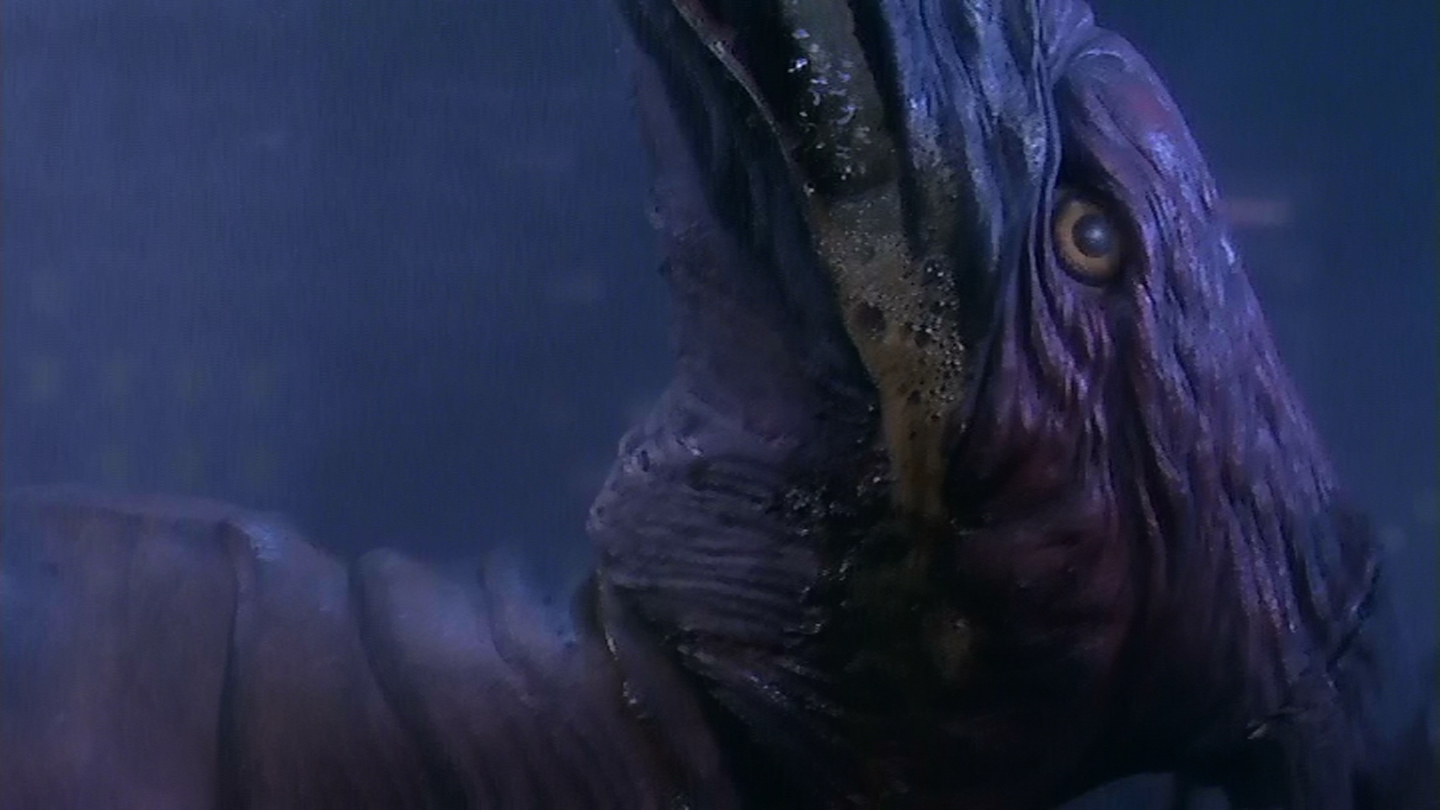
The battle between Godzilla and Mechagodzilla takes place on a larger stage than any of the previoud Heisei films. There's a lot of room for the camera to pan, to catch the monsters in longer shots.
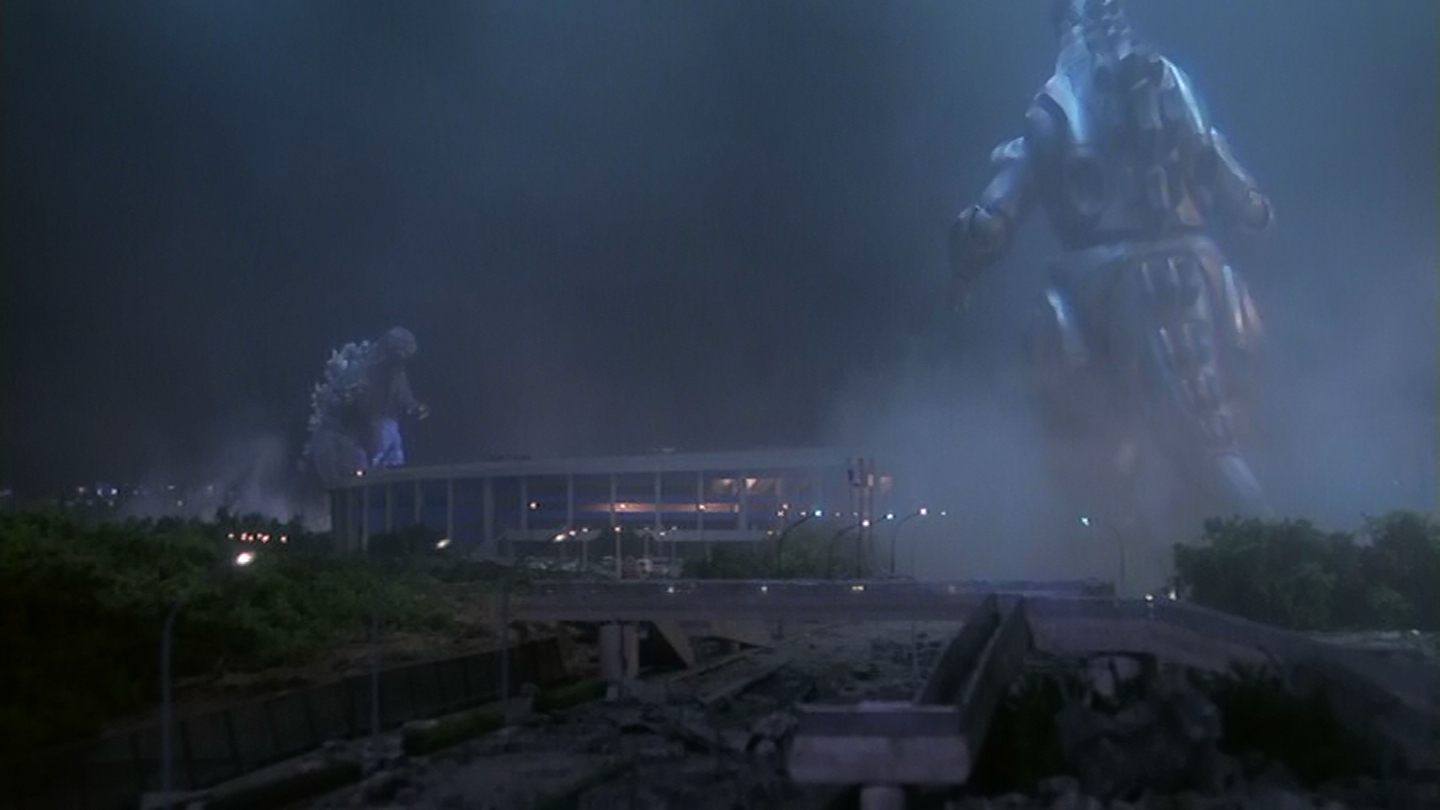
Godzilla gains the upper hand almost immediately, as Mechagodzilla overheats after and shuts down. But Garuda is able to distract Godzilla, and the two merge into Super Mechagodzilla confguration.
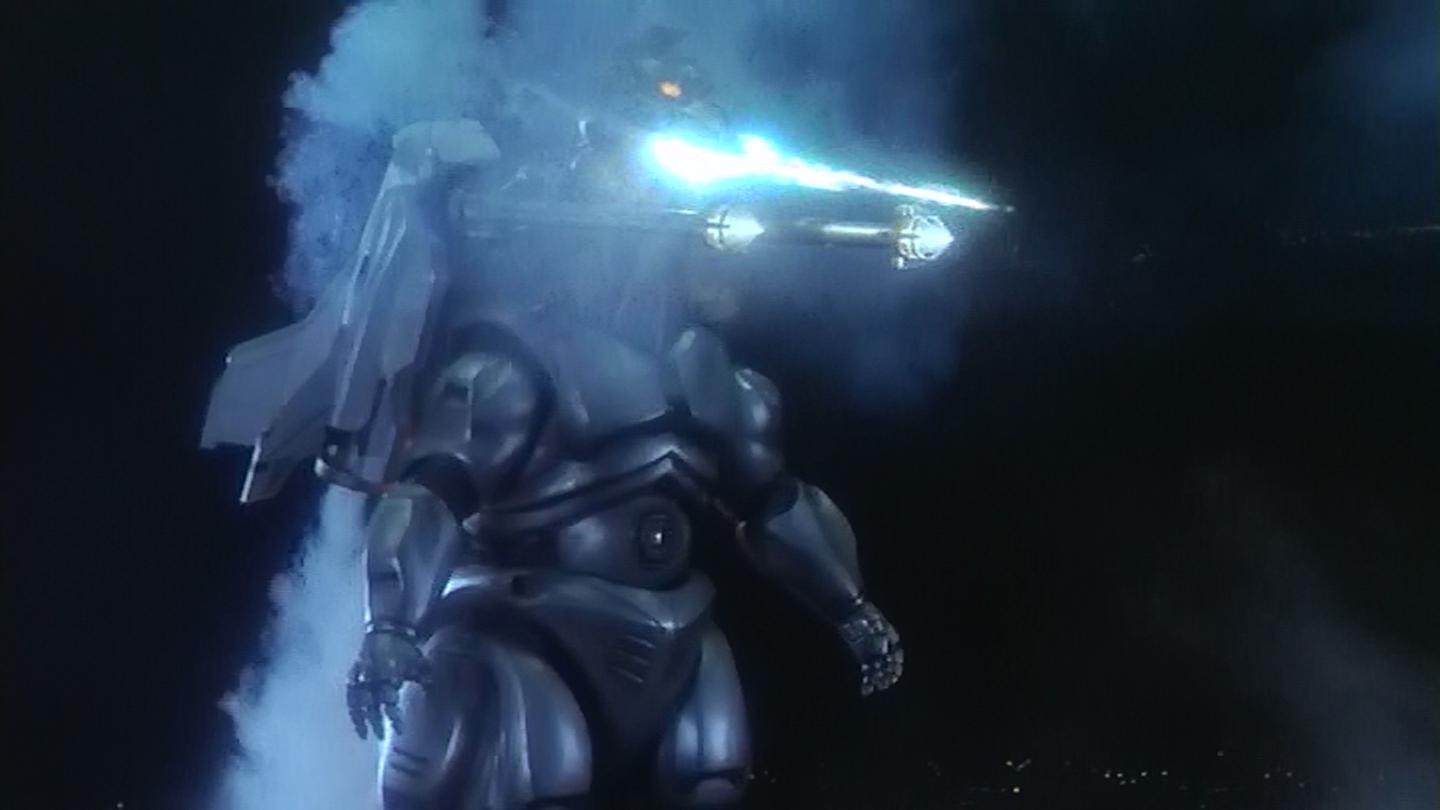
This is too much for Godzilla. The combined and sustained firepower knockes Godzilla down and keeps him down. It's then up to objector Miki Sagusa to deploy the G-Crusher, which will cripple Godzilla.
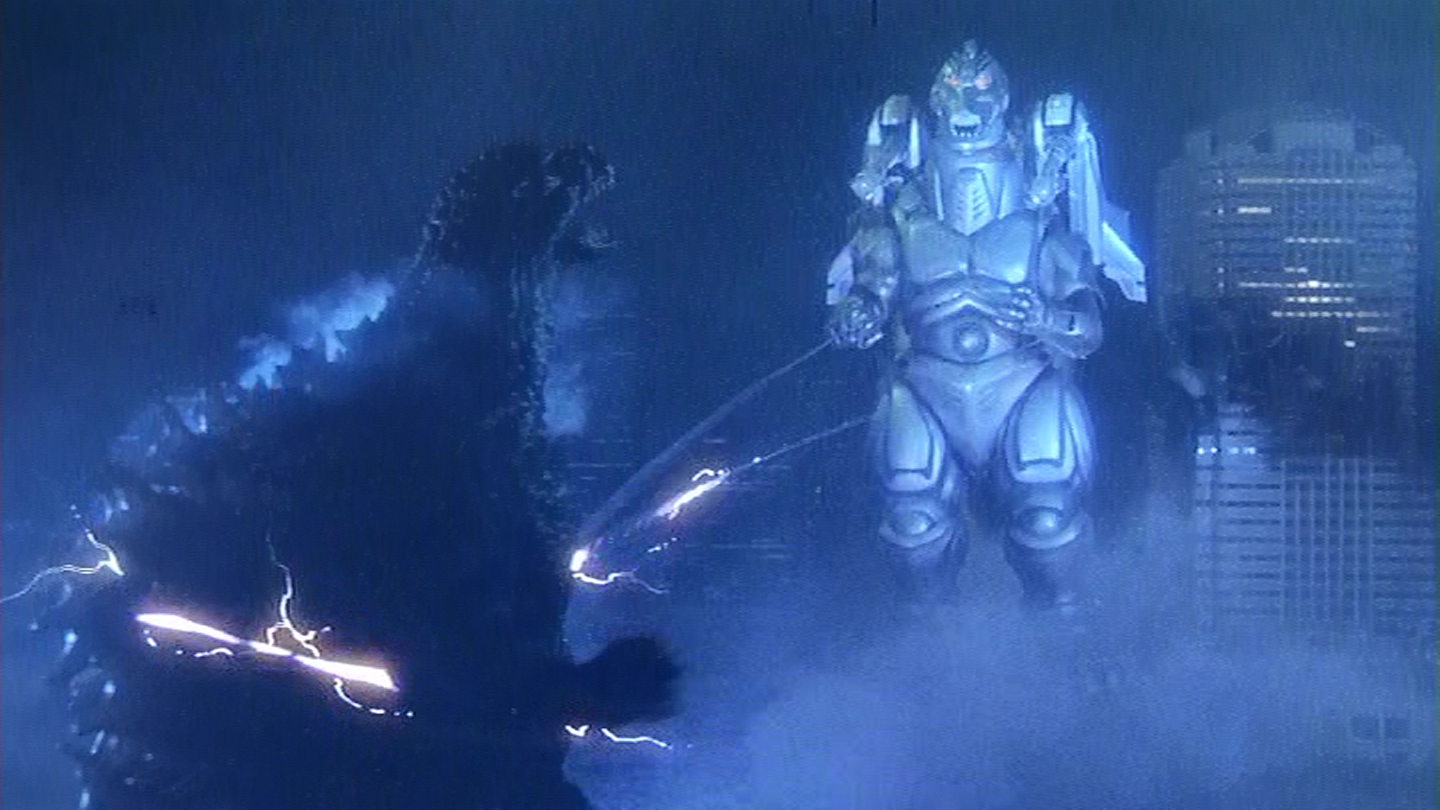
Godzilla screams in pain as the energy from the wires lashes at him. Miki pulls the trigger, and the nerve bundle that's been targeted explodes. It's a hard scene to watch.
Fortunately, Rodan isn't as dead as we thought he was. Awakened by Godzilla Junior, it lands on Godzilla, and gifts it the rest of Rodan's life. This repairs the nerve bundle, and Godzilla is back in action. This raises an interesting chain of events. Rodan was first reawakened by song. It therefore follows that Godzilla has just absorbed the power of song. Which is kind of weird.
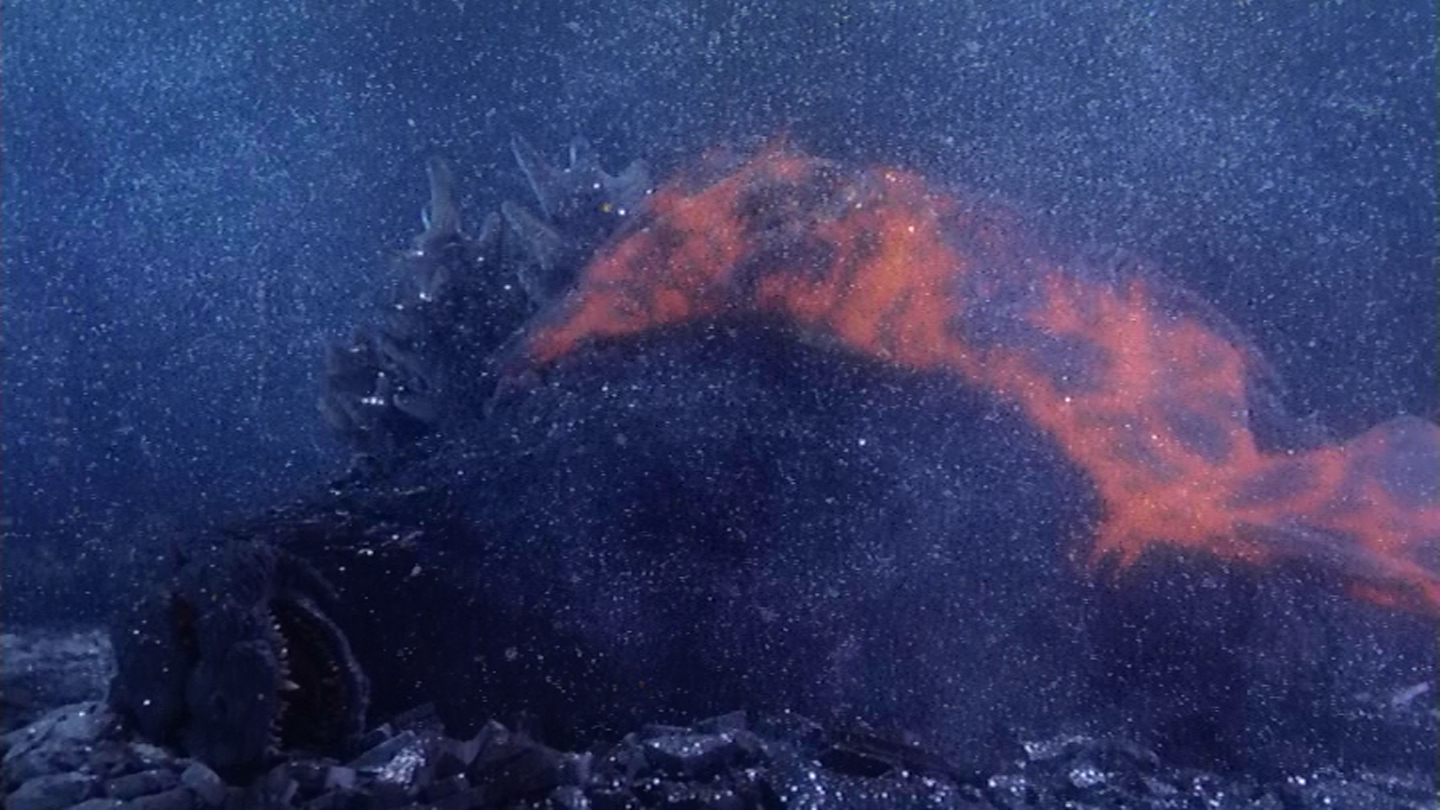
Godzilla is more powerful than he was. He crackles with electricity, his heat ray has gone from blue to red. As Akira Ifukube's familiar Godzilla march plays in the background, Godzilla gets back to his feet and destroys Mechagodzilla. His power, already increased in the last film, is even greater now. It doesn't just blast Mechagodzilla, it turnes the supposedly heat-proof robot into a blazing inferno. Once again, by interfering, humanity has just made their Godzilla problem worse.
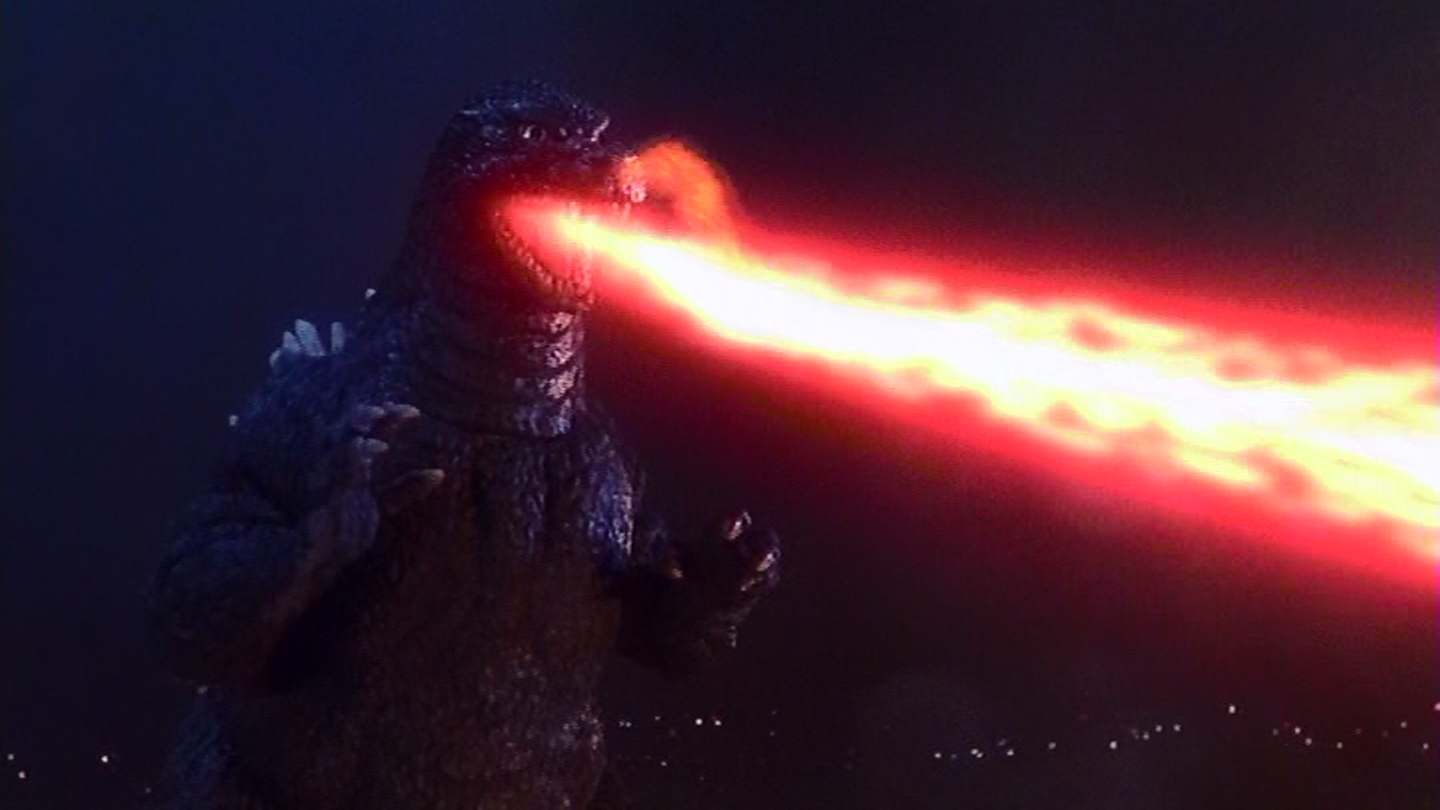
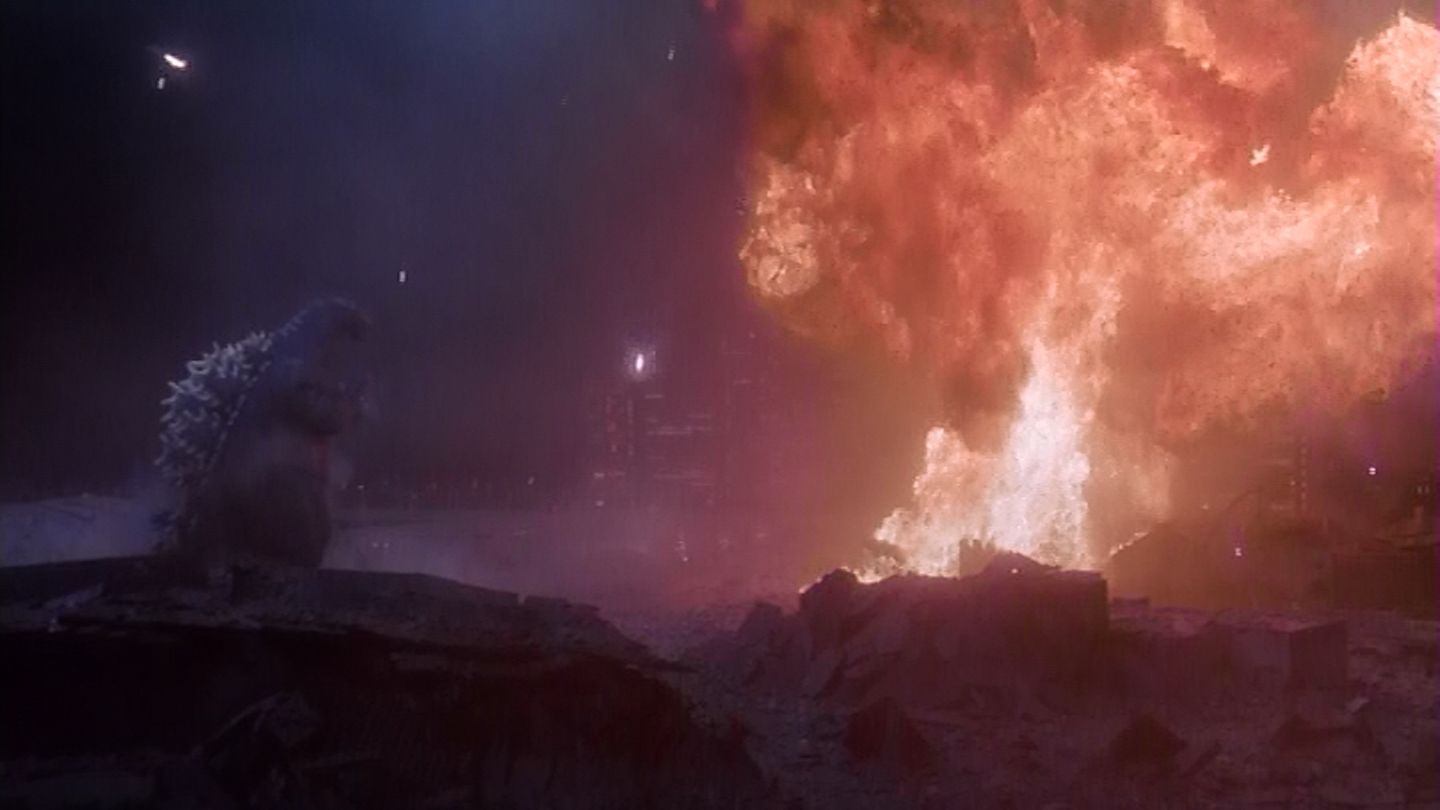
As with Gorgo, the solution is to send Godzilla Junior back to its parent, and the two walk out into the sea. Miki says farewell to both Godzilla and Godzilla Junior. While she may not like what Godzilla does, she no longer wants him destroyed.
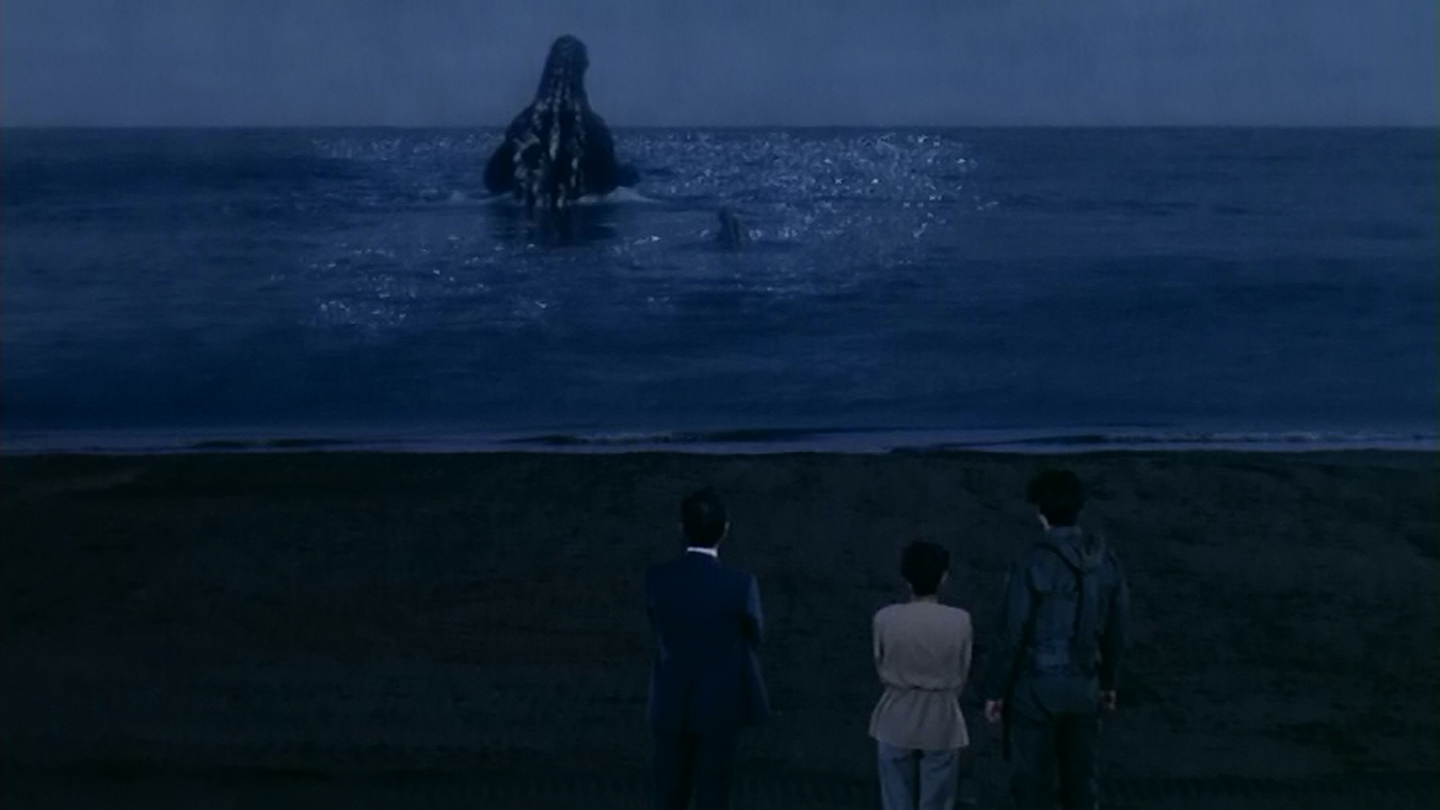
This is one of the better Heisei Godzilla films. The monster action is pretty constant, and there's a little more heart to it than in most other Heisei films. There is no obvious homage to other films, and despite cute, young Godzilla's appearance, it's not nearly as irritating as the previous version of Junior Godzilla.
Godzilla + Space. Should be awesome, right?
1 comment:
There's a lot of background to this film, too. Originally, it was supposed to be the final Godzilla movie for the Heisei series, and Ishiro Honda himself was going to direct it. Sadly, he died before this idea was realized. Godzilla himself was also supposed to die, and his energy was meant to go into Baby, who would matured into a full-grown adult and destroy MechaGodzilla before leaving Japan.
It's a shame you didn't mention the music for this film, because it's fantastic, and Akira Ifukube really brought his A-game to the table. The girls singing, which re-energized Rodan is a special mention, but the highlight goes to the ending theme as Godzilla and Baby leave.
When listening to the ending theme, you can tell that this film was originally meant to be the final one, and it serves as a heartwarming farewell to the franchise's father, Ishiro Honda.
Post a Comment